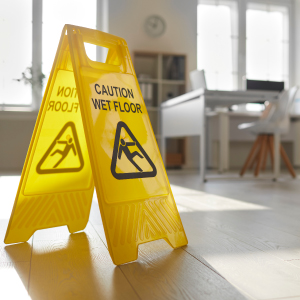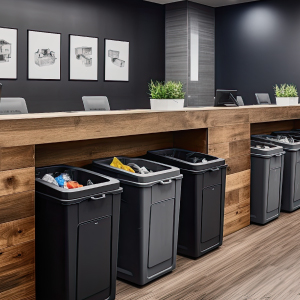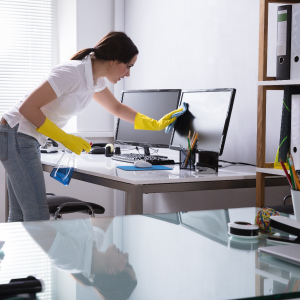Mould will appear in any building if moisture is left alone and doesn’t dry out. Hopefully, it should be relatively easy to get rid of, and with a little effort it can often be avoided altogether.
- Mould develops due to moisture.
- It can be got rid of relatively easily and even avoided altogether.
Mould spores are floating in the air, inside and outside the building, and if they land on warm, moist surfaces then they are landing in the perfect conditions they need to grow. As most offices will have damp areas, mould is quite likely to appear.
Keeping rooms dry and cool is easier said than done so if you see any signs of mould developing, here are a few ways to get rid of them.
Showers are one of the most likely areas for mould to appear as they repeatedly get wet and can often be inadequately ventilated. To remove mould from grout and tiles, open the window if there is one and put the fan on for maximum ventilation then spray with mould cleaner and follow the instructions. Some may say wipe it away instantly and others might tell you to wait for a while. When you’ve followed the instructions, make sure the room is well ventilated so that it can dry out properly.
You can use the same process to try and remove mould from shower curtains too, just make sure that when it’s drying, it’s flat and not folding up on itself. You could even try machine washing the shower curtain with a detergent and bleach suitable for fabrics, then hang it to dry completely.
For other fabrics, go outside to brush off any obvious mould (which minimises the spread of spores indoors) then spot treat the mouldy areas with laundry detergent before washing in the machine on the hottest safe setting for the fabric, adding fabric bleach if the care label says you can. Repeat the process as necessary to make sure the mould spots have gone before air drying or tumble drying as appropriate.
If mould has developed on walls or ceilings, try to remove them by making a solution of washing up liquid and water then sponging the mouldy area with circular strokes. Rinse it thoroughly with the sponge then let it dry out. You could repeat this process with a weak bleach solution, wait for 5 minutes, then scrub the area with the sponge again. Rinse with warm water, blot with a clean cloth or paper towel then leave to air dry.
Removing mould from wood needs a gentler approach, especially if it’s old or losing its finish. Vacuum the loose mould spores then sponge the area lightly with a soapy solution but be careful not to soak the wood. Rinse with a damp, clean cloth then finish with a dry clean cloth.
Obviously, we can’t control the spores that are floating around and sometimes rooms are humid and difficult to ventilate. To help prevent mould developing in the first place you could consider buying an electric dehumidifier if you’re really struggling, use the bathroom with the windows or doors open, leave the shower doors open (after wiping down the shower with something absorbent) when you’ve finished, or if you have a shower curtain making sure that you leave it stretched out. And of course, try not to store items when they are still damp, or in damp places.
Always take precautions such as wearing rubber gloves, or a mask, and read the instructions carefully for successful mould-free results.







